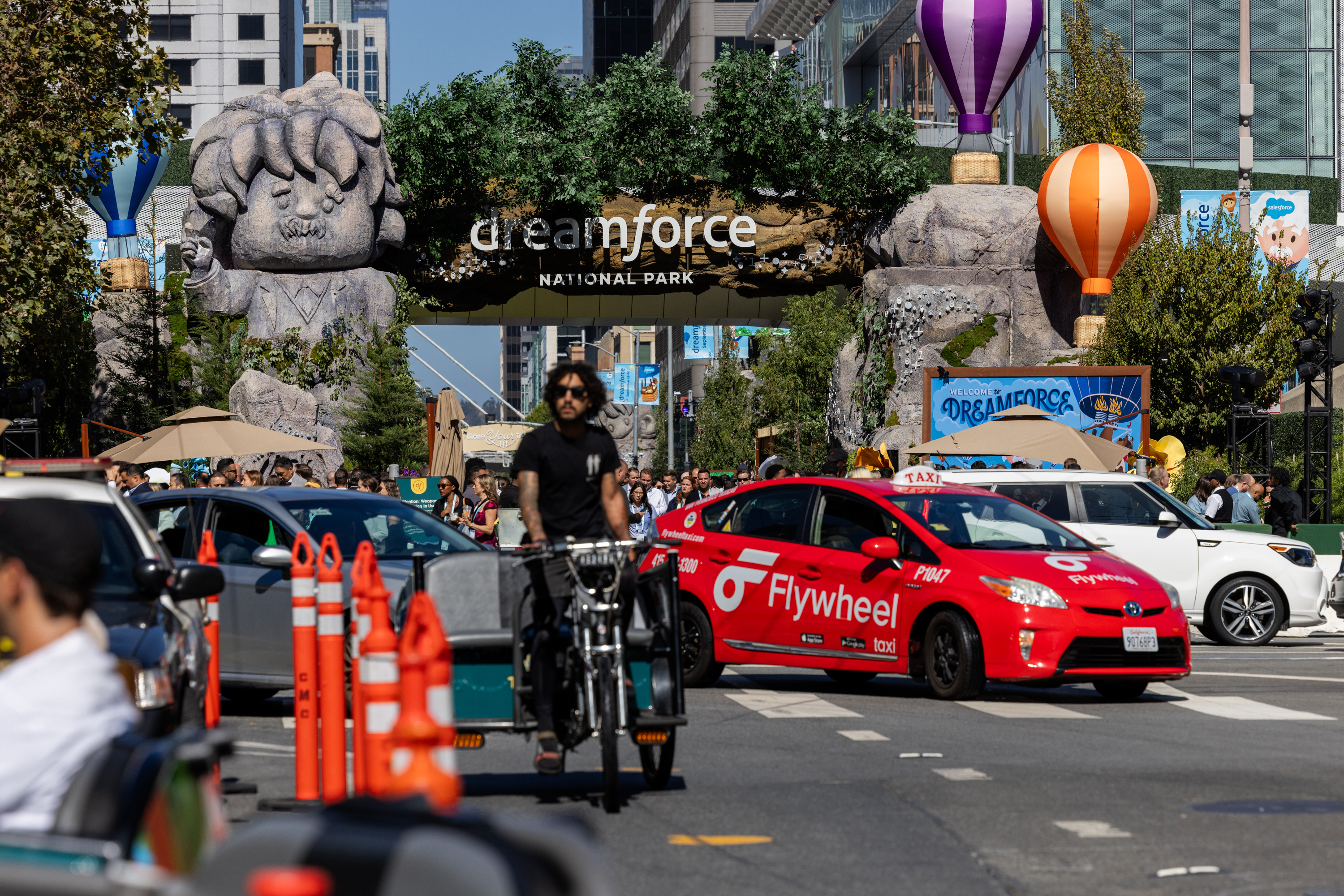The Standard’s Alex Mullaney answers a reader-submitted question about how much Salesforce pays to close down streets around Moscone Center for its Dreamforce conference.
Closing a city street for construction or a block party can cost money, time or both. And closing down a major thoroughfare in San Francisco for a megaconference is no different.
Just like a contractor reserving a section of curbside to park trucks or a community group throwing a block party, Salesforce works with City Hall to throw its annual Dreamforce conference at Moscone Center. That means working with city agencies to apply for permits and organize resources—just on a much larger scale.
Salesforce worked with San Francisco’s transportation agency, police department and the city-owned Moscone Center to throw its star-studded, three-day conference this week for 40,000 attendees. (Dreamforce is projected to generate $89.3 million for the city this year, according to San Francisco Travel’s Lori Lincoln.)
The event ended late Thursday, but Howard Street between Third and Fourth streets is still closed, and traffic is detoured through Sunday as workers deconstruct all the equipment used for the conference. So how much does it cost the city to keep traffic moving around Moscone Center when Dreamforce is in full effect? Here’s the breakdown:
While city department representatives said the cost for this year’s conference won’t be known for several weeks, figures from the 2019 edition are instructive. That year, 171,000 people registered to attend over 2,700 talks and workshops, according to the company.
The San Francisco Municipal Transportation Agency played the biggest role, managing traffic control, street closures, detours, street signal changes and signage for the area around Moscone Center.
“Dreamforce pays SFMTA cost recovery measures for the application review, [parking control officers] deployments, traffic management plan review and any necessary work by SFMTA shops such as signal timing changes, restriping, no parking signage, etc.,” said Stephen Chun, the transportation agency’s spokesman.
Traffic management planning for detours is developed for Salesforce’s contractors, who provide the signage and handle installation, Chun added. Salesforce did not respond to a request for comment.
In 2019, labor costs for street closure expenses totaled almost $90,000, documents obtained by The Standard show. Parking control officers worked over 500 hours, traffic signal engineers and sign-makers logged 100 hours, and painters worked over 50 hours.
But that’s not the total cost of traffic control. San Francisco Police Department officers are also dispatched to key intersections during the conference. They also provide security for the conference. In 2019, the bill totaled $400,000, according to a heavily redacted invoice obtained by The Standard.
“For security reasons, we do not disclose the number of officers we deploy to events,” SFPD Sgt. Kathryn Winters said.
Salesforce paid the police department $233,000 for security, $160,000 for the traffic detail to work Howard Street and $7,000 to provide traffic control for an event.
Total cost of Dreamforce recouped by the city: $490,000.
